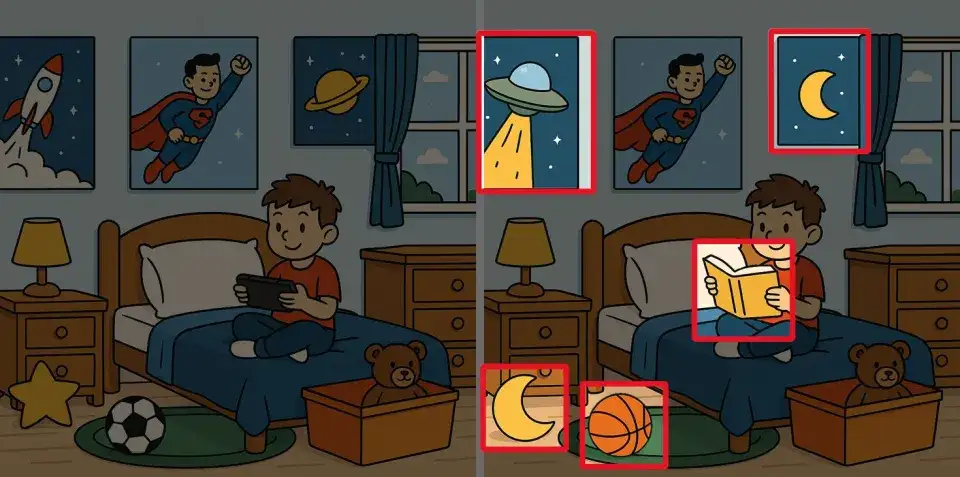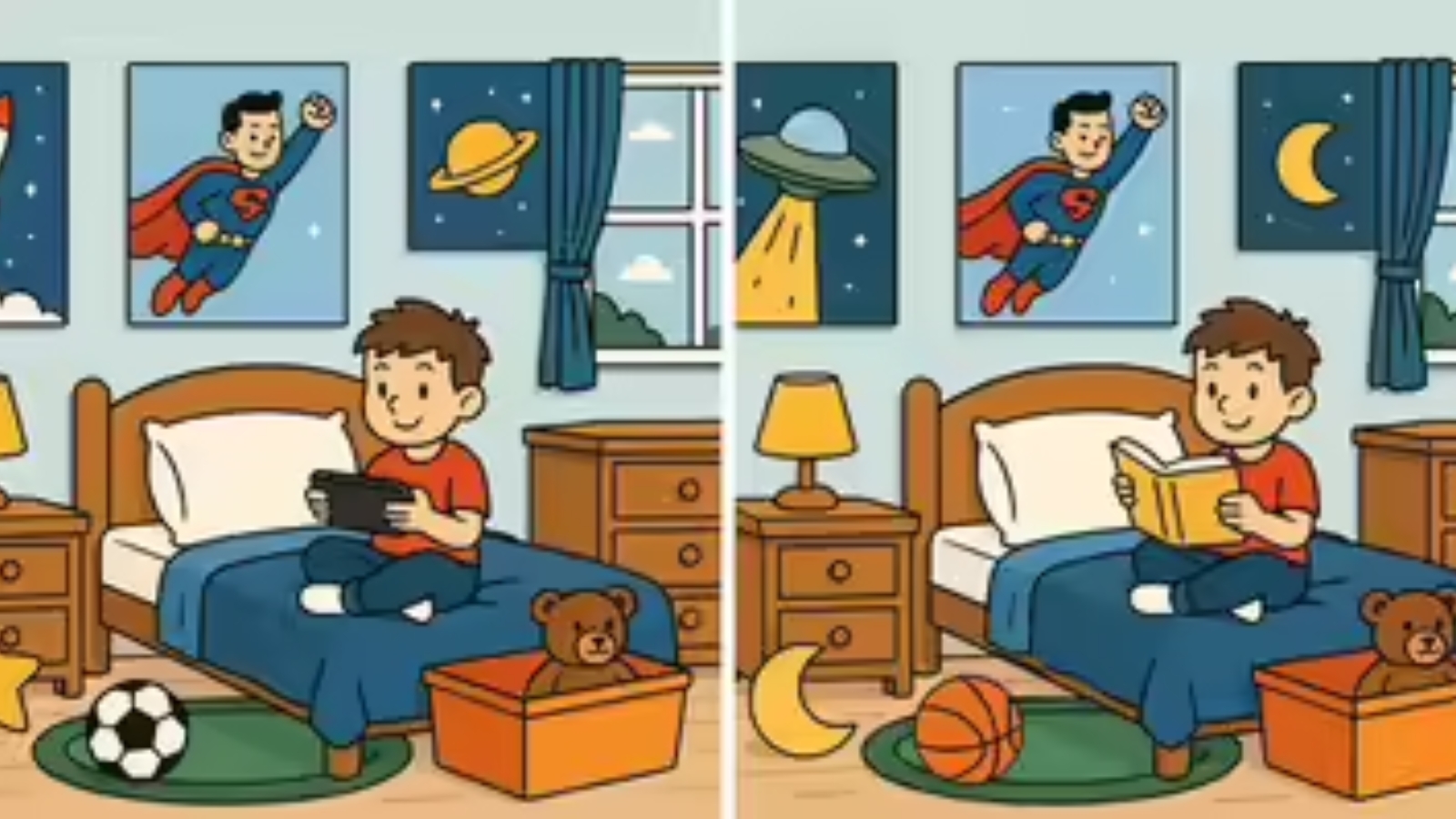Have you ever stared at a seemingly simple image, searching for a hidden number that everyone claims is “right there”? Optical illusions featuring hidden numbers have become incredibly popular online, challenging people to spot specific digits like 787 within tight time limits. These visual puzzles aren’t just entertaining – they’re fantastic exercises for your brain and eyes.
What Are Number-Finding Optical Illusions?
Number-finding optical illusions are carefully designed images where specific digits are camouflaged within patterns, colors, or backgrounds. The challenge typically involves locating a particular number, such as 787, 456, or 123, within 10 seconds or less. These puzzles test your visual perception, attention to detail, and ability to focus under pressure.
Unlike traditional optical illusions that play with depth or movement, number-finding challenges rely on subtle differences in color, shading, or font styling to hide digits in plain sight. The target number might appear slightly darker, lighter, or positioned at an unexpected angle compared to surrounding elements.
Optical Illusion Find 5 Sneaky Changes in the Boy’s Room Fast

Why Do These Challenges Captivate Us?
Humans naturally enjoy problem-solving activities that provide quick satisfaction. When you successfully spot that elusive 787 within the time limit, your brain releases a small burst of dopamine – the same chemical associated with achievement and reward. This creates an addictive cycle that keeps people coming back for more challenges.
The Science Behind Visual Perception Puzzles
Visual perception involves complex processes in your brain that interpret information received through your eyes. When faced with a number-finding challenge, several cognitive functions work simultaneously:
Pattern recognition helps identify familiar shapes and structures, while selective attention allows you to focus on specific details while filtering out distractions. Your working memory temporarily stores potential matches as you scan the image systematically.
How Your Eyes and Brain Collaborate
Your eyes perform rapid movements called saccades, jumping from point to point across an image. During each fixation, lasting about 200-300 milliseconds, your visual cortex processes colors, shapes, and patterns. Expert puzzle solvers develop more efficient scanning strategies, reducing the time needed to locate hidden numbers.
Color perception plays a crucial role in these challenges. The human eye can distinguish approximately 10 million different colors, but subtle variations often hide the target number. People with perfect eyesight and strong color discrimination abilities typically perform better at these tasks.
Benefits of Regular Visual Challenge Practice
Engaging with optical illusion puzzles offers numerous cognitive and visual benefits that extend beyond entertainment value.
Enhanced Focus and Concentration
Regular practice with 10-second challenges trains your brain to maintain intense focus for short periods. This skill transfers to other activities requiring sustained attention, from reading complex documents to driving safely in challenging conditions.
Observational skills improve dramatically with consistent practice. You’ll begin noticing details in everyday situations that previously went unobserved – from architectural features to subtle changes in people’s expressions.
Visual Processing Speed
Number-finding exercises enhance your brain’s ability to process visual information quickly. Professional drivers, pilots, and surgeons often engage in similar training to maintain sharp visual perception skills essential for their careers.
Your eyesight benefits from the varied focusing distances and rapid eye movements required during puzzle solving. This natural exercise helps maintain flexibility in your eye muscles and may reduce digital eye strain from screen time.
Proven Strategies to Find Hidden Numbers
Successful puzzle solvers employ specific techniques to locate numbers like 787 within the challenging 10-second time frame.
Systematic Scanning Method
Instead of randomly searching, develop a systematic approach. Start from the top-left corner and move horizontally across each row, then drop down to the next line. This methodical technique ensures you don’t miss any areas or waste time re-examining the same spots.
Grid-based thinking helps organize your search pattern. Mentally divide the image into 4-6 sections and examine each thoroughly before moving on. This prevents the overwhelming feeling that comes from trying to process the entire image simultaneously.
Color and Contrast Awareness
Hidden numbers often appear in slightly different shades or contrasts compared to surrounding elements. Train your eyes to detect subtle variations by comparing adjacent areas. Sometimes, the target 787 appears bolder, lighter, or with a different texture than decoy numbers.
Pay attention to edges and boundaries where different colors meet. These transition zones frequently hide camouflaged digits that become visible when you focus on the contrast differences.
Different Types of Number Illusion Challenges
| Challenge Type | Description |
|---|---|
| Color Variation Puzzles | Numbers hidden through subtle color differences, requiring sharp visual perception to distinguish target digits from background elements |
| Pattern Camouflage Tests | Digits concealed within repetitive patterns, testing your ability to spot irregularities and maintain focus during systematic searching |
| Size Discrimination Challenges | Hidden numbers appear slightly larger or smaller than surrounding elements, requiring keen observational skills to identify size variations |
| Rotation and Angle Puzzles | Target digits rotated or positioned at unusual angles, challenging traditional pattern recognition and requiring flexible thinking approaches |
| Transparency Overlays | Numbers appear as semi-transparent overlays on complex backgrounds, testing color perception and the ability to separate layered visual information |
| Font Style Variations | Subtle differences in typography hide target numbers, requiring attention to character shapes, thickness, and spacing details |
The Psychology of Visual Challenges
Optical illusion challenges tap into fundamental aspects of human psychology and cognition. The satisfaction from solving these puzzles triggers reward pathways in your brain, creating positive associations with problem-solving activities.
Time pressure adds excitement and urgency to the experience. The 10-second limit creates a mild stress response that sharpens focus and heightens awareness. This controlled stress environment helps build mental resilience and improves performance under pressure in other situations.
Individual Differences in Performance
Not everyone solves these challenges at the same rate, and that’s perfectly normal. Age, experience with visual puzzles, attention span, and even cultural background influence performance. Younger individuals often excel due to faster visual processing speeds, while experienced puzzle enthusiasts develop superior strategies that compensate for any age-related changes.
People with certain visual processing disorders might find these challenges more difficult, but consistent practice often leads to improvement. The brain’s neuroplasticity allows for adaptation and skill development regardless of starting ability level.
Creating Your Own Visual Challenge Practice Routine
Dedicate 10-15 minutes daily to visual puzzle practice for optimal results. Start with easier challenges featuring high contrast differences, then gradually progress to more subtle variations. This progressive approach builds confidence while steadily improving your observational skills.
Mix different puzzle types to ensure comprehensive skill development. Alternate between color-based challenges, pattern recognition tests, and size discrimination puzzles to exercise various aspects of visual perception.
Tracking Your Progress
Keep a simple log of your success rate and average solving times. Many people see improvement within 2-3 weeks of regular practice. Don’t get discouraged by initial difficulties – visual perception skills develop gradually with consistent effort.
Share challenges with friends and family members to add social motivation. Friendly competition often accelerates learning and makes practice sessions more enjoyable.
Advanced Techniques for Expert-Level Performance
Once you’ve mastered basic strategies, advanced techniques can help you achieve expert-level performance in finding numbers like 787 within the challenging 10-second timeframe.
Peripheral vision training expands your effective search area. Practice identifying objects and numbers using your side vision while keeping your eyes focused on a central point. This skill allows simultaneous monitoring of multiple image areas.
Breathing control might seem unrelated, but proper oxygenation keeps your brain sharp during intense visual searching. Take a deep breath before starting each challenge and maintain steady, relaxed breathing throughout the process.
Mental Preparation Strategies
Visualization techniques prepare your mind for success. Before attempting a challenge, spend 5-10 seconds mentally rehearsing your scanning pattern and visualizing yourself successfully spotting the target number.
Positive self-talk boosts confidence and reduces anxiety that can interfere with visual perception. Replace thoughts like “I’ll never find it” with “I’m systematically checking each area and will locate the number.”
Optical Illusion Answer

Frequently Asked Questions
Q: Why can some people find hidden numbers faster than others?
A. Individual differences in visual processing speed, attention control, and pattern recognition abilities contribute to performance variations. Regular practice helps everyone improve regardless of starting skill level.
Q: Do these puzzles actually improve eyesight?
A. While they don’t correct vision problems, optical illusion challenges exercise eye muscles and may help maintain visual perception sharpness, especially beneficial for people spending long hours on digital devices.
Q: How often should I practice visual challenges?
A. Daily 10-15 minute sessions provide optimal benefits without causing eye strain. Consistency matters more than duration for developing keen observational skills.
